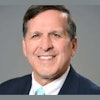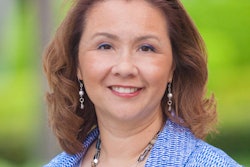
We know that diagnosing an issue with a patient is a key part of a dental practice, but early diagnosis also is important to a patient's overall oral health.
But how are trends looking when it comes to the use of diagnostics in the dental practice? According to data compiled by Sikka Software over the past seven years, practices are using more diagnostic technology more often to benefit their patients.
Increasing services
To find out trends, we examined data that have been collected by Sikka Software from more than 12,500 dental practices from around the U.S. These numbers come from data from a comprehensive list of diagnostic codes ranging from bitewings to 3D cone-beam CT (CBCT) scans.
Here is what we found for the quantities of diagnostic services performed per month, per practice.
| Monthly average of diagnostic services done per U.S. practice | |
| Year | No. of diagnostic services |
| 2010 | 371.83 |
| 2011 | 376.92 |
| 2012 | 380.83 |
| 2013 | 394.92 |
| 2014 | 411.50 |
| 2015 | 435.25 |
| 2016 | 438.25 |
What goes into these numbers? Sikka Software looks at a comprehensive list of diagnostic codes ranging from bitewings to 3D CBCT scans.
So what are some of the reasons behind this trend? I asked insurance expert and nationally known speaker and author Teresa Duncan, founder of Odyssey Management.
"This trend is in line with what I hear from attendees in classes," Duncan said. "The insurance companies are requiring diagnostic records, which is perceived by doctors as, 'I should record as much as I can, just in case.' "
Negative trend?
I asked Duncan if this was a negative trend and if it's driven by insurance.
"It's not a bad trend. The industry as a whole is moving in this direction and [the] SNO-DDS [dental diagnostic system] will make it standard," she replied. "On the nondata side, it's good for the patient. A doctor who makes treatment decisions with good, plentiful information will make better decisions in the end."
“It's important for you to know your numbers and also how those numbers compare with national averages.”
I also asked Duncan about the bigger jumps in some of the numbers from year to year, particularly between 2013 and 2014, as well as 2014 and 2015. A jump in technology for dental practices resulted in a jump in the number of images being taken, Duncan said.
"You have to remember that this was the time frame when CBCT really came onto the scene for practices, both in terms of technology being added and codes being added for those services as well," Duncan said. "These numbers show that practices are incorporating the latest technology to help their patients."
How does this trend compare to what is happening in your practice? As a business owner, it's important for you to know your numbers and also how those numbers compare with national averages. With the fourth quarter of the year set to begin on October 1, now is a good time to determine what you need to know to end the year successfully and also plan ahead for a profitable 2018.
Alitta Boechler is the director of digital marketing at Sikka Software. You can contact her at [email protected].Practice Mobilizer is a free app that lets dentists send HIPAA-compliant video messages, tracks patient arrival times, provides ZIP code-specific fee data, and more. Dentists can check out store.sikkasoft.com or the mobile app at www.practicemobilizer.com.
Please note that the data should be used for comparison only.
The comments and observations expressed herein do not necessarily reflect the opinions of DrBicuspid.com, nor should they be construed as an endorsement or admonishment of any particular idea, vendor, or organization.



















